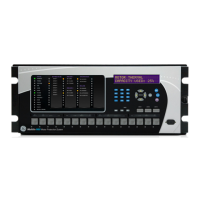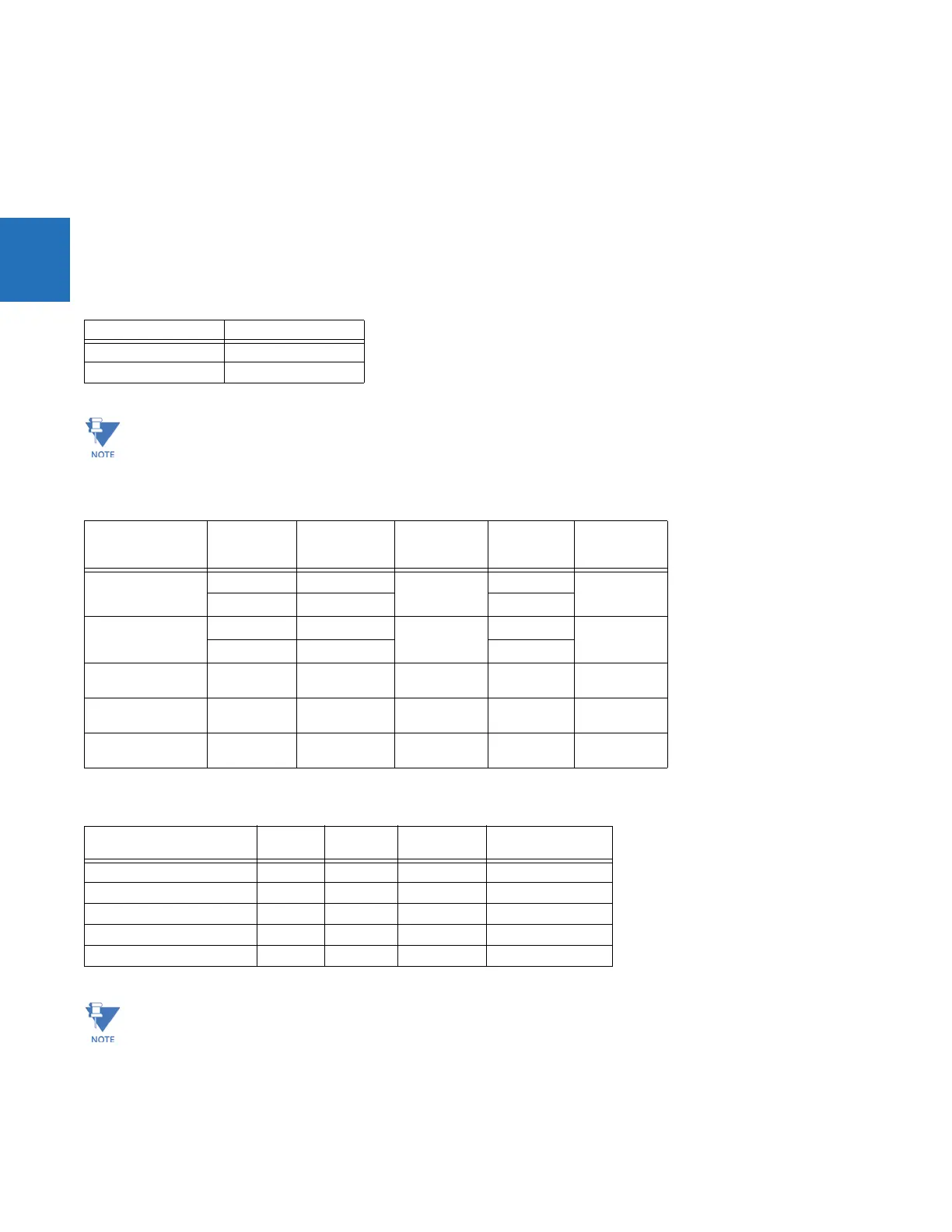2-34 M60 MOTOR PROTECTION SYSTEM – INSTRUCTION MANUAL
SPECIFICATIONS CHAPTER 2: PRODUCT DESCRIPTION
2
PARALLEL REDUNDANCY PROTOCOL (PRP)
(IEC 62439-3 CLAUSE 4, 2012)
Ethernet ports used: 2 and 3
Networks supported: 10/100 Mb Ethernet
OTHER
TFTP, SFTP, HTTP, IEC 60870-5-104, Ethernet Global Data (EGD), IEEE C37.118
2.5.9 Inter-relay communications
SHIELDED TWISTED-PAIR INTERFACE OPTIONS
LINK POWER BUDGET AND MAXIMUM OPTICAL INPUT POWER
The following specifications apply to filter interface modules manufactured from January 2012.
The following specifications apply to filter interface modules implemented before January 2012.
Interface type Typical distance
RS422 1200 m
G.703 100 m
RS422 distance is based on transmitter power and does not take into consideration the clock source provided by
the user.
Emitter, fiber type Cable type Transmit power Received
sensitivity
Power budget Maximum
optical input
power
820 nm, Multimode 62.5/125 m -16 dBm -32 dBm 16 dBm -8 dBm
50/125 m -20 dBm 12 dBm
1300 nm, Multimode 62.5/125 m -16 dBm -32 dBm 16 dBm -8 dBm
50/125 m -20 dBm 12 dBm
1300 nm, Single
mode
9/125 m -15 dBm -32 dBm 17 dBm -8 dBm
1300 nm Laser,
Single mode
9/125 m 0 dBm -34 dBm 34 dBm -8 dBm
1550 nm Laser,
Single mode
9/125 m 5 dBm -34 dBm 39 dBm -10 dBm
Emitter, fiber type Transmit
power
Received
sensitivity
Power budget Maximum optical
input power
820 nm LED, Multimode –20 dBm –30 dBm 10 dB –7.6 dBm
1300 nm LED, Multimode –21 dBm –30 dBm 9 dB –11 dBm
1300 nm ELED, Single mode –23 dBm –32 dBm 9 dB –14 dBm
1300 nm Laser, Single mode –1 dBm –30 dBm 29 dB –14 dBm
1550 nm Laser, Single mode +5 dBm –30 dBm 35 dB –14 dBm
The power budgets are calculated from the manufacturer’s worst-case transmitter power and worst case receiver
sensitivity.
The power budgets for the 1300 nm ELED are calculated from the manufacturer's transmitter power and receiver
sensitivity at ambient temperature. At extreme temperatures these values deviate based on component tolerance.
On average, the output power decreases as the temperature is increased by a factor of 1 dB / 5 °C.

